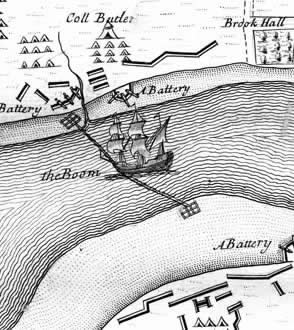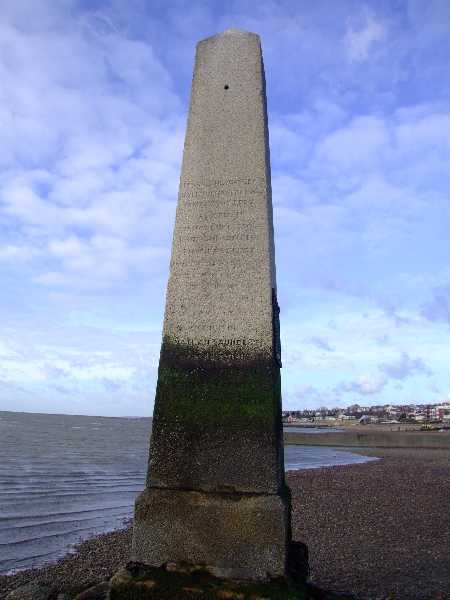|
Isle Of Grain
Isle of Grain (Old English ''Greon'', meaning gravel) is a village and the easternmost point of the Hoo Peninsula within the district of Medway in Kent, south-east England. No longer an island and now forming part of the peninsula, the area is almost all marshland and is a major habitat for diverse wetland birds. The village constitutes a civil parish, which at the 2011 census had a population of 1,648, a net decrease of 83 people in 10 years. History Extract from the ''Topographical Dictionary of Great Britain and Ireland'' by John Gorton, 1833: "GRAINE, ISLE OF, co. Kent'' "A parish in the Hundred of Hoo, lathe of Aylesford, opposite to Sheppey at the mouth of the Thames; it is about three miles and a half long, and two and a half broad and is formed by Yantlet Creek running from the Medway to the Thames. The Creek was filled up, and had a road across it for 40 years until 1823, when the Lord Mayor ordered it to be again reopened, so as to give about eight feet naviga ... [...More Info...] [...Related Items...] OR: [Wikipedia] [Google] [Baidu] |
Medway
Medway is a unitary authority district and conurbation in Kent, South East England. It had a population of 278,016 in 2019. The unitary authority was formed in 1998 when Rochester-upon-Medway amalgamated with the Borough of Gillingham to form Medway Towns. It is now a unitary authority area run by Medway Council, independent of Kent County Council but still part of the ceremonial county of Kent. Medway is one of the boroughs included in the Thames Gateway development scheme. It is also the home of Universities at Medway, a tri-partite collaboration of the University of Greenwich, the University of Kent and Canterbury Christ Church University on a single campus in Chatham, together with the University for the Creative Arts, which has a campus in Rochester. Geography Because of its strategic location by the major crossing of the River Medway, it has made a wide and significant contribution to Kent, and to England, dating back thousands of years, as evident in the siting of Wa ... [...More Info...] [...Related Items...] OR: [Wikipedia] [Google] [Baidu] |
Medway Towns
Medway is a unitary authority district and conurbation in Kent, South East England. It had a population of 278,016 in 2019. The unitary authority was formed in 1998 when Rochester-upon-Medway amalgamated with the Borough of Gillingham to form Medway Towns. It is now a unitary authority area run by Medway Council, independent of Kent County Council but still part of the ceremonial county of Kent. Medway is one of the boroughs included in the Thames Gateway development scheme. It is also the home of Universities at Medway, a tri-partite collaboration of the University of Greenwich, the University of Kent and Canterbury Christ Church University on a single campus in Chatham, together with the University for the Creative Arts, which has a campus in Rochester. Geography Because of its strategic location by the major crossing of the River Medway, it has made a wide and significant contribution to Kent, and to England, dating back thousands of years, as evident in the siting of Wat ... [...More Info...] [...Related Items...] OR: [Wikipedia] [Google] [Baidu] |
Oil Refinery
An oil refinery or petroleum refinery is an industrial process plant where petroleum (crude oil) is transformed and refined into useful products such as gasoline (petrol), diesel fuel, asphalt base, fuel oils, heating oil, kerosene, liquefied petroleum gas and petroleum naphtha. Petrochemicals feedstock like ethylene and propylene can also be produced directly by cracking crude oil without the need of using refined products of crude oil such as naphtha. The crude oil feedstock has typically been processed by an oil production plant. There is usually an oil depot at or near an oil refinery for the storage of incoming crude oil feedstock as well as bulk liquid products. In 2020, the total capacity of global refineries for crude oil was about 101.2 million barrels per day. Oil refineries are typically large, sprawling industrial complexes with extensive piping running throughout, carrying streams of fluids between large chemical processing units, such as distillation colu ... [...More Info...] [...Related Items...] OR: [Wikipedia] [Google] [Baidu] |
Antisubmarine Net
An anti-submarine net or anti-submarine boom is a boom placed across the mouth of a harbour or a strait for protection against submarines. Examples of anti-submarine nets * Lake Macquarie anti-submarine boom *Indicator net * Naval operations in the Dardanelles Campaign *Sydney Harbour anti-submarine boom netIsle of Bute during World War II - Anti-submarine net in the Clyde Estuary in Scotland (Item 4) See also *Anti-submarine warfare *Jumping wire (of a submarine) *Net cutter (submarine) *Net laying ship *Torpedo net Anti-submarine warfare Anti-submarine weapons An anti-submarine weapon (ASW) is any one of a number of devices that are intended to act against a submarine and its crew, to destroy (sink) the vessel or reduce its capability as a weapon of war. In its simplest sense, an anti-submarine weapo ... Auxiliary gateship classes References {{reflist ... [...More Info...] [...Related Items...] OR: [Wikipedia] [Google] [Baidu] |
Boom (navigational Barrier)
A boom or a chain (also boom defence, harbour chain, river chain, chain boom, boom chain or variants) is an obstacle strung across a navigable stretch of water to control or block navigation. In modern times they usually have civil uses, such as to prevent access to a dangerous river channel. But, especially historically, they have been used militarily, with the goal of denying access to an enemy's ships: a modern example is the anti-submarine net. Booms have also been used to force passing vessels to pay a toll. Description A boom generally floats on the surface, while a chain can be on the surface or below the water. A chain could be made to float with rafts, logs, ships or other wood, making the chain a boom as well. Historical uses Especially in medieval times, the end of a chain could be attached to a chain tower or boom tower. This allowed safe raising or lowering of the chain, as they were often heavily fortified. By raising or lowering a chain or boom, access could be s ... [...More Info...] [...Related Items...] OR: [Wikipedia] [Google] [Baidu] |
Margate
Margate is a seaside resort, seaside town on the north coast of Kent in south-east England. The town is estimated to be 1.5 miles long, north-east of Canterbury and includes Cliftonville, Garlinge, Palm Bay, UK, Palm Bay and Westbrook, Kent, Westbrook. The town has been a significant maritime port since the Middle Ages, and was associated with Dover as part of the Cinque Ports in the 15th century. It became a popular place for holidaymakers in the 18th century, owing to easy access via the Thames, and later with the arrival of the railways. Popular landmarks include the sandy beaches and the Dreamland Margate, Dreamland amusement park. During the late 20th century, the town went into decline along with other British seaside resorts, but attempts are being made to revitalise the economy. History Margate was listed in the Domesday Book of 1086 as lying within the hundred of Thanet and the county of Kent. Margate was recorded as "Meregate" in 1264 and as "Margate" in 1299, b ... [...More Info...] [...Related Items...] OR: [Wikipedia] [Google] [Baidu] |
Port Of London Authority
The Port of London Authority (PLA) is a self-funding public trust established on 31 March 1909 in accordance with the Port of London Act 1908 to govern the Port of London. Its responsibility extends over the Tideway of the River Thames and its continuation (the Kent/Essex strait). It maintains and supervises navigation, and protects the river's environment. The PLA originally operated all enclosed dock systems on the river (except the Regent's Canal Dock), but these have long been closed to commercial traffic, with the exception of Port of Tilbury, which was privatised in 1992. It inherited the private police forces of the companies which had previously run the docks, reorganising them into a single Port of London Authority Police. Finance The PLA receives no funding from the government and is entirely self-financing. Revenues are raised from conservancy charges on vessels and cargo, pilotage charges, annual port dues, hydrographic services, river works licence fees and cha ... [...More Info...] [...Related Items...] OR: [Wikipedia] [Google] [Baidu] |
London Stone (riparian)
London Stone is the name given to a number of boundary stones that stand beside the rivers Thames and Medway, which formerly marked the limits of jurisdiction (riparian water rights) of the City of London. History Until 1350, the English Crown held the right to fish the rivers of England and charged duties on those people it licensed to fish. In 1197 King Richard I, in need of money to finance his involvement in the Third Crusade, sold the rights over the lower reaches of the River Thames to the City of London. Marker stones were erected to indicate the limit of the City's rights. In Victorian times, the Lord Mayor would come in procession by water and touch the Staines stone with a sword to re-affirm the City's rights. Control of the river passed from the City to the Thames Conservancy, and then below Teddington to the Port of London Authority and above it to Thames Water Authority and finally the Environment Agency. Staines In medieval times before the canalisation of ... [...More Info...] [...Related Items...] OR: [Wikipedia] [Google] [Baidu] |
City Of London
The City of London is a city, ceremonial county and local government district that contains the historic centre and constitutes, alongside Canary Wharf, the primary central business district (CBD) of London. It constituted most of London from its settlement by the Romans in the 1st century AD to the Middle Ages, but the modern area named London has since grown far beyond the City of London boundary. The City is now only a small part of the metropolis of Greater London, though it remains a notable part of central London. Administratively, the City of London is not one of the London boroughs, a status reserved for the other 32 districts (including Greater London's only other city, the City of Westminster). It is also a separate ceremonial county, being an enclave surrounded by Greater London, and is the smallest ceremonial county in the United Kingdom. The City of London is widely referred to simply as the City (differentiated from the phrase "the city of London" by ca ... [...More Info...] [...Related Items...] OR: [Wikipedia] [Google] [Baidu] |
Malaria
Malaria is a mosquito-borne infectious disease that affects humans and other animals. Malaria causes symptoms that typically include fever, tiredness, vomiting, and headaches. In severe cases, it can cause jaundice, seizures, coma, or death. Symptoms usually begin ten to fifteen days after being bitten by an infected mosquito. If not properly treated, people may have recurrences of the disease months later. In those who have recently survived an infection, reinfection usually causes milder symptoms. This partial resistance disappears over months to years if the person has no continuing exposure to malaria. Malaria is caused by single-celled microorganisms of the ''Plasmodium'' group. It is spread exclusively through bites of infected ''Anopheles'' mosquitoes. The mosquito bite introduces the parasites from the mosquito's saliva into a person's blood. The parasites travel to the liver where they mature and reproduce. Five species of ''Plasmodium'' can infect and be spread by h ... [...More Info...] [...Related Items...] OR: [Wikipedia] [Google] [Baidu] |




.jpg)


